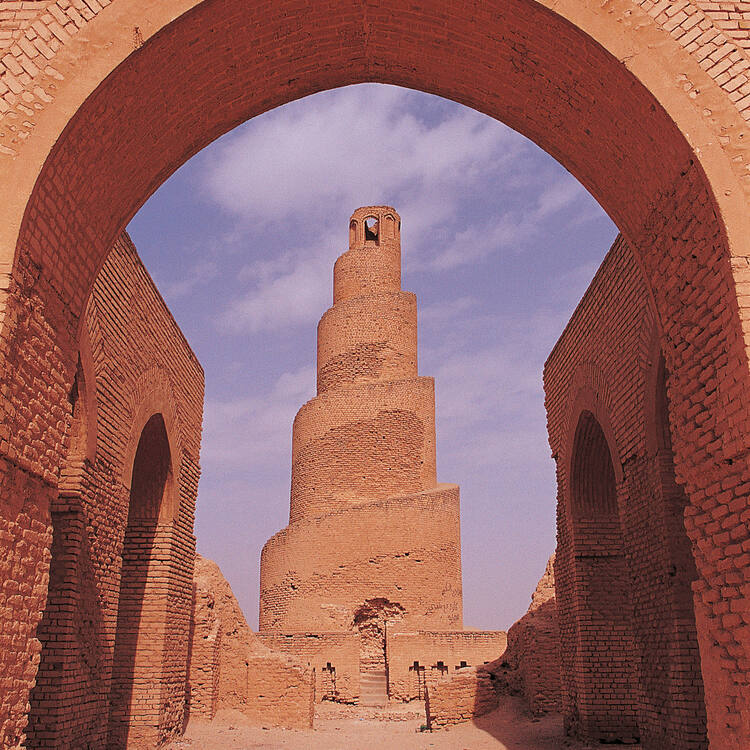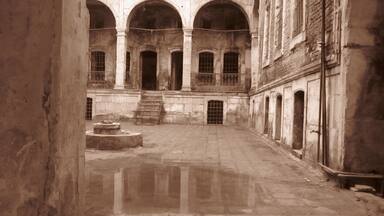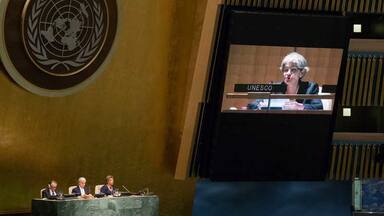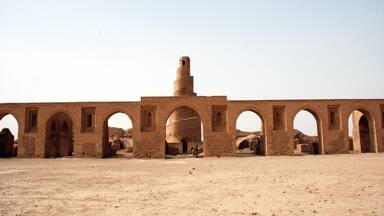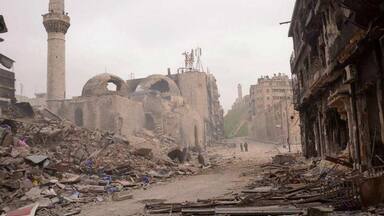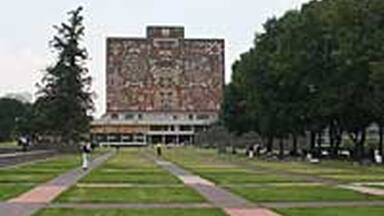Samarra Archaeological City
Samarra Archaeological City
Samarra Archaeological City is the site of a powerful Islamic capital city that ruled over the provinces of the Abbasid Empire extending from Tunisia to Central Asia for a century. Located on both sides of the River Tigris 130 km north of Baghdad, the length of the site from north to south is 41.5 km; its width varying from 8 km to 4 km. It testifies to the architectural and artistic innovations that developed there and spread to the other regions of the Islamic world and beyond. The 9th-century Great Mosque and its spiral minaret are among the numerous remarkable architectural monuments of the site, 80% of which remain to be excavated.
Description is available under license CC-BY-SA IGO 3.0
Ville archéologique de Samarra
Siège d’une puissante capitale islamique qui régna sur les provinces de l’Empire abbasside, qui s’étendit pendant un siècle de la Tunisie à l’Asie centrale, la ville est située sur les berges du Tigre, à 130 km au nord de Bagdad. Elle s’étend sur 41,5 km du nord au sud pour une largeur qui varie entre 4 et 8 km. Elle témoigne d’innovations architecturales et artistiques qui se sont développées ici et se sont répandues dans les autres régions du monde islamique et au-delà. La Grande Mosquée et son minaret en spirale, datant du IXe siècle, est l’un des nombreux monuments remarquables du site ; 80 % de la ville reste à mettre au jour.
Description is available under license CC-BY-SA IGO 3.0
مدينة سامراء الأثرية
تقع مدينة سامراء على ضفاف نهر دجلة وعلى مسافة 130 كيلومترا شمال بغداد، وكانت مقر عاصمة إسلامية جبارة بسطت نفوذها على أقاليم الدولة العباسية التي امتدت خلال قرن من الزمن من تونس إلى وسط آسيا. تمتد المدينة بطول 41 كيلومترا ونصف الكيلومتر من الشمال إلى الجنوب، أما عرضها فيتراوح بين 4 و8 كيلومترات. وتحتوي على ابتكارات هندسية وفنية طوّرت محلياً قبل أن تنقل إلى أقاليم العالم الإسلامي وأبعد من ذلك. ومن بين الآثار العديدة والبارزة الموجودة في الموقع المسجد الجامع ومئذنته الملوية، وقد شيدا في القرن التاسع الميلادي. ويبقى قرابة 80٪ من المدينة الأثرية مطمورا ويحتاج إلى تنقيب.
source: UNESCO/CPE
Description is available under license CC-BY-SA IGO 3.0
萨迈拉古城
萨迈拉古城被列入了《世界文化遗产名录》和《世界濒危遗产名录》,它是强大的伊斯兰都城的遗址,这个都城在一个多世纪的时间里统治了从突尼斯延伸到中亚的阿巴斯帝国的各个省份。它位于巴格达以北130公里的底格里斯河两岸,从北到南长41.5公里,宽度从4公里到8公里不等。该遗址证明其在建筑和艺术方面具有创新性,这种创新性在那里有所发展,并传播到伊斯兰世界和伊斯兰世界以外的其他地区。公元9世纪的大清真寺和通天塔,是该遗址众多的杰出建筑奇迹之一,其中仍有80%有待挖掘。
source: UNESCO/CPE
Description is available under license CC-BY-SA IGO 3.0
Археологический памятник Самарра
Объект, внесенный в Список в категории культурного наследия, расположен на территории когда-то могущественной исламской столицы, господство которой распространялось на провинции империи Аббасидов, просуществовавшей в течение века и простиравшейся от Туниса до Центральной Азии. Расположенный по обоим берегам реки Тигр, в 130 км к северу от Багдада, его протяженность с севера на юг – 41,5 км, ширина изменяется от 8 до 4 км. На территории объекта сохранились свидетельства появившихся здесь архитектурных и художественных новшеств, распространившихся затем как в других районах исламского мира, так и за его пределами.
source: UNESCO/CPE
Description is available under license CC-BY-SA IGO 3.0
Ciudad arqueológica de Samarra
Situada a 130 km al norte de Bagdad, a orillas del Tigris, esta ciudad fue la capital de las provincias del Imperio Abasida, que dominó durante más de un siglo el vasto territorio comprendido entre los confines de Túnez y el Asia Central. Extendida a lo largo de un eje norte-sur, con una longitud de 41,5 km y una anchura que oscila entre 4 y 8 km, la ciudad posee vestigios que atestiguan las importantes innovaciones arquitectónicas y artísticas realizadas en ella, que luego se extenderían por otras regiones del mundo islámico y más allá. Uno de sus monumentos más destacados es la Gran Mezquita del siglo IX, que posee un minarete en espiral. Queda todavía por excavar el 80% del sitio arqueológico.
source: UNESCO/CPE
Description is available under license CC-BY-SA IGO 3.0
都市遺跡サーマッラー
サーマッラーはバグダッドの北西約130㎞、チグリス川沿いに位置し、836~892年にアッバース朝の首都として繁栄した。8割が未発掘だが、アッバース朝の都市遺跡では唯一原型を残すといわれ、チュニジアから中央アジアまで勢力が及んでいた王朝の首都にふさわしく、当時のイスラム世界で最大を誇ったモスクや宮殿などが多く建設された。特に、9世紀建造の大モスクに付随する螺旋状のマルウィヤ・ミナレットは、この地を代表する建造物。サーマッラーの建築技術や芸術が、ほかのイスラム世界に及ぼした影響は大きい。現在のイラクの政情下では維持や保存活動が困難で、世界遺産リストと同時に、危機遺産リストにも登録された。source: NFUAJ
Archeologische stad Samarra
De Archeologische stad Samarra verhaalt van een machtige islamitische hoofdstad die heerste over de provincies van het Abbasidische Rijk, dat zich uitstrekte van Tunesië tot Centraal Azië. Samarra ligt aan de rivier de Tigris, 130 kilometer ten noorden van Bagdad. Het gebied is 41,5 kilometer lang en de breedte varieert van 8 tot 4 kilometer. De plek getuigt van architectonische en artistieke innovaties die daar ontwikkeld werden en zich vervolgens verspreidden naar andere delen van de islamitische wereld en daarbuiten. De 9e-eeuwse Grote Moskee met zijn spiraalvormige minaret is een van de vele opmerkelijke monumenten van het archeologische gebied, waarvan 80% nog moet worden opgegraven.
Source: unesco.nl
Outstanding Universal Value
The ancient capital of Samarra dating from 836-892 provides outstanding evidence of the Abbasid Caliphate which was the major Islamic empire of the period, extending from Tunisia to Central Asia. It is the only surviving Islamic capital that retains its original plan, architecture and arts, such as mosaics and carvings. Samarra has the best preserved plan of an ancient large city, being abandoned relatively early and so avoiding the constant rebuilding of longer lasting cities.
Samarra was the second capital of the Abbasid Caliphate after Baghdad. Following the loss of the monuments of Baghdad, Samarra represents the only physical trace of the Caliphate at its height.
The city preserves two of the largest mosques (Al-Malwiya and Abu Dulaf) and the most unusual minarets, as well as the largest palaces in the Islamic world (the Caliphal Palace Qasr al-Khalifa, al-Ja'fari, al Ma'shuq, and others). Carved stucco known as the Samarra style was developed there and spread to other parts of the Islamic world at that time. A new type of ceramic known as Lustre Ware was also developed in Samarra, imitating utensils made of precious metals such as gold and silver.
Criterion (ii): Samarra represents a distinguished architectural stage in the Abbasid period by virtue of its mosques, its development, the planning of its streets and basins, its architectural decoration, and its ceramic industries.
Criterion (iii): Samarra is the finest preserved example of the architecture and city planning of the Abbasid Caliphate, extending from Tunisia to Central Asia, and one of the world's great powers of that period. The physical remains of this empire are usually poorly preserved since they are frequently built of unfired brick and reusable bricks.
Criterion (iv): The buildings of Samarra represent a new artistic concept in Islamic architecture in the Malwiya and Abu Dulaf mosques, in the form of a unique example in the planning, capacity and construction of Islamic mosques by comparison with those which preceded and succeeded it. In their large dimensions and unique minarets, these mosques demonstrate the pride and political and religious strength that correspond with the strength and pride of the empire at that time.
Since the war in Iraq commenced in 2003, this property has been occupied by multi-national forces that use it as a theatre for military operations.
The conditions of integrity and authenticity appear to have been met, to the extent evaluation is possible without a technical mission of assessment. After abandonment by the Caliphate, occupation continued in a few areas near the nucleus of the modern city but most of the remaining area was left untouched until the early 20th century. The archaeological site is partially preserved, with losses caused mainly by ploughing and cultivation, minor in comparison with other major sites. Restoration work has been in accordance with international standards.
The boundaries of the core and buffer zones appear to be both realistic and adequate. Prior to current hostilities, the State Party protected the site from intrusions, whether farming or urban, under the Archaeological Law. Protective procedures have been in abeyance since 2003 and the principal risk to the property arises from the inability of the responsible authorities to exercise control over the management and conservation of the site.
